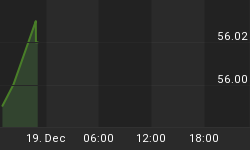Something Appears Broken Somewhere?

Full Report: Download pdf- - 21 Pages
Sovereign Debt in Peripheral Nations Becoming Impaired
Things are only getting worse quickly and investors need to understand this as reports like the following begin to surface:
The Dallas Fed met with the banks a week ago and effectively suspended mark-to-market on energy debts and as a result no impairments are being written down. Furthermore, the Fed indicated "under the table" that banks were to work with the energy companies on delivering without a markdown on worry that a backstop, or bail-in, was needed after reviewing loan losses would exceed the current tier 1 capital tranches.
It will soon surface that many peripheral nations dependent on Energy and base commodities have intractable sovereign debt issues which cannot be solved like Saudi Arabia abruptly announcing it is privatizing its oil assets through an IPO of the $10T Saudi Aramco

Credit Cycle Has Turned - Everything Is Now Resting on a Moving Floor

What investors need to realize is that the Credit Cycle has reversed after 8 years. It reverses because corporate free cash flow begin shrinking and therefore credit risk increases. It is a simple reaction to the realities of the numbers but is compounded when Debt levels to EBITDA rise significantly.
This is what is occurring and the markets are reacting. The heavily leveraged energy sector is being taken to the "wood shed" as are many levered mining and commodity conglomerates.
The Commodity complex and energy began falling when the realities of a potential US Taper program actually occurring were first realized. We have written extensively since the announcement by the US Federal Reserve of its "TAPER" program that an inevitable collapsing commodity market in Emerging Economies would be the catalyst for the next crisis.

We concluded in our 2014 Thesis paper "The Globalization Trap" that a good proxy for a slowing China would initially be commodity prices and in turn the levered players behind the massive commodity run - up. Make no mistake about it; China is in the process of a hard landing which is being once again temporarily camouflaged by credit expansion! This is a ticking time bomb with players like Glencore are 'ground zero'.

When the large Energy and Mining companies have their debt rated as junk it will lead to a waterfall of collateral shortfalls and margin calls, reminiscent of the ratings agency downgrade of AIG that culminated with the US bailout of the insurer. Commodity traders have raised at least $125 billion of debt, of which about $75 billion is loans. In other words, there is about $75 billion in secured debt, collateralized by either inventory and/or receivables collateral whose value has cratered in the past year and as a result the LTV on the secured loans has soared. This is the tip of the iceberg that is prompting the panicked banks to be more eager to provide funds to the suddenly distressed energy - trading sector than even the borrowers themselves.
















